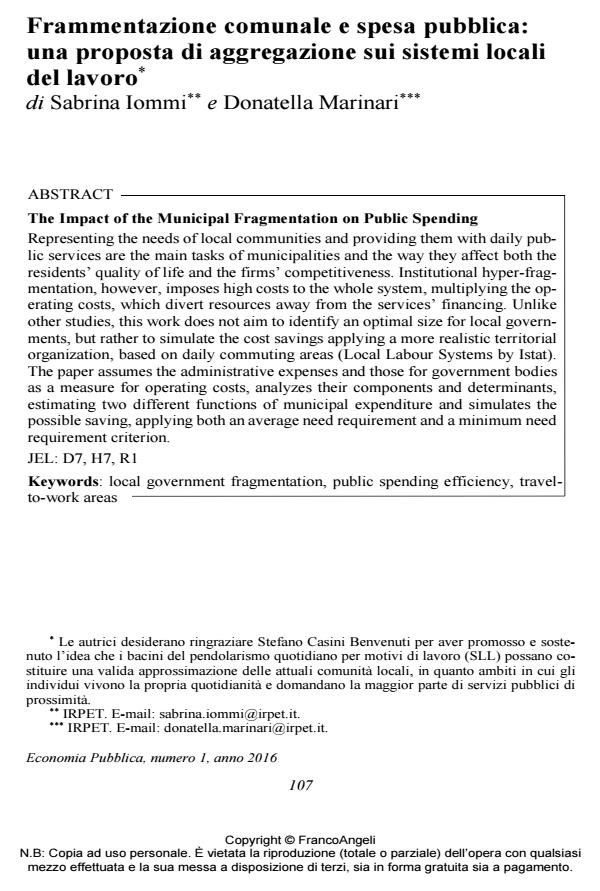The Impact of the Municipal Fragmentation on Public Spending
Journal title ECONOMIA PUBBLICA
Author/s Sabrina Iommi, Donatella Marinari
Publishing Year 2016 Issue 2016/1
Language Italian Pages 30 P. 107-136 File size 420 KB
DOI 10.3280/EP2016-001006
DOI is like a bar code for intellectual property: to have more infomation
click here
Below, you can see the article first page
If you want to buy this article in PDF format, you can do it, following the instructions to buy download credits

FrancoAngeli is member of Publishers International Linking Association, Inc (PILA), a not-for-profit association which run the CrossRef service enabling links to and from online scholarly content.
Representing the needs of local communities and providing them with daily public services are the main tasks of municipalities and the way they affect both the residents’ quality of life and the firms’ competitiveness. Institutional hyper-fragmentation, however, imposes high costs to the whole system, multiplying the operating costs, which divert resources away from the services’ financing. Unlike other studies, this work does not aim to identify an optimal size for local governments, but rather to simulate the cost savings applying a more realistic territorial organization, based on daily commuting areas (Local Labour Systems by Istat). The paper assumes the administrative expenses and those for government bodies as a measure for operating costs, analyzes their components and determinants, estimating two different functions of municipal expenditure and simulates the possible saving, applying both an average need requirement and a minimum need requirement criterion.
Keywords: Local government fragmentation, public spending efficiency, travel-to-work areas
Jel codes: D7, H7, R1
- Che cosa sappiamo della traiettoria di sviluppo di Napoli? (What Do We Know About Naples' Development Trajectory?) Antonio Calafati, in SSRN Electronic Journal /2017
DOI: 10.2139/ssrn.3074485 - Spatial Agglomeration of MNEs: The Role of Information Externalities and Knowledge Spillovers Sergio Mariotti, Lucia Piscitello, Stefano Elia, in SSRN Electronic Journal /2009
DOI: 10.2139/ssrn.1427838
Sabrina Iommi, Donatella Marinari, Frammentazione comunale e spesa pubblica: una proposta di aggregazione sui sistemi locali del lavoro in "ECONOMIA PUBBLICA " 1/2016, pp 107-136, DOI: 10.3280/EP2016-001006